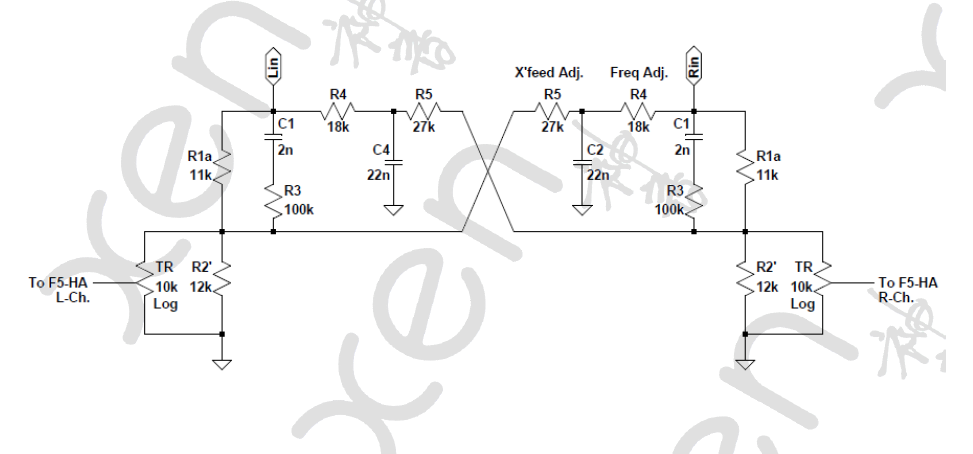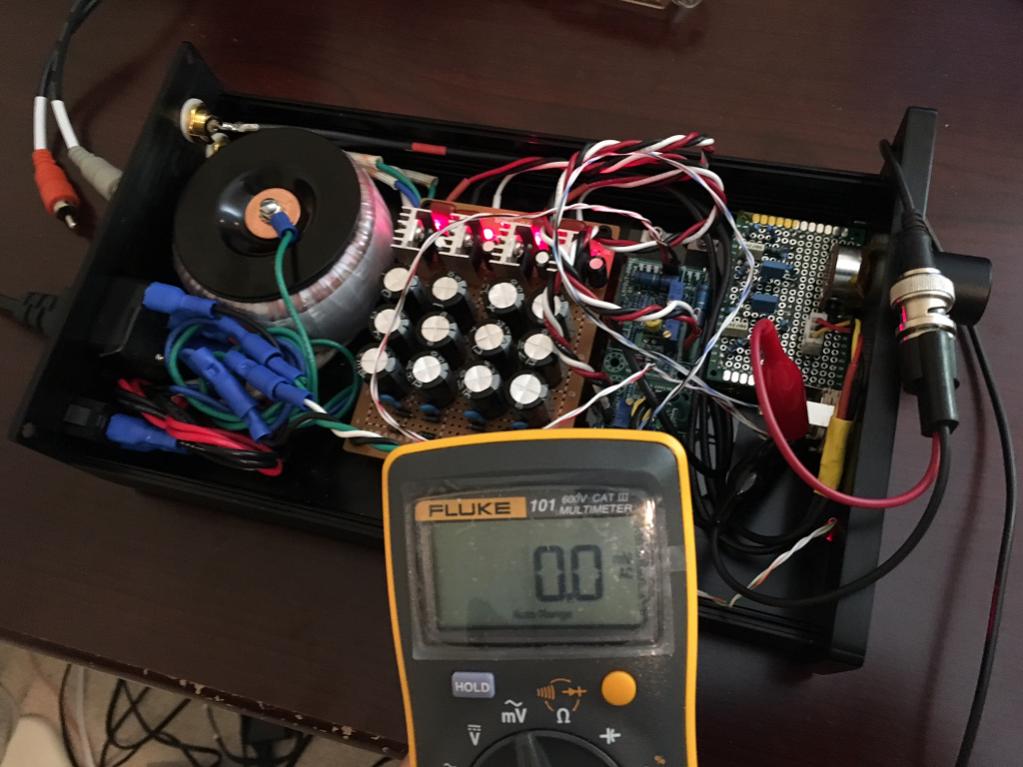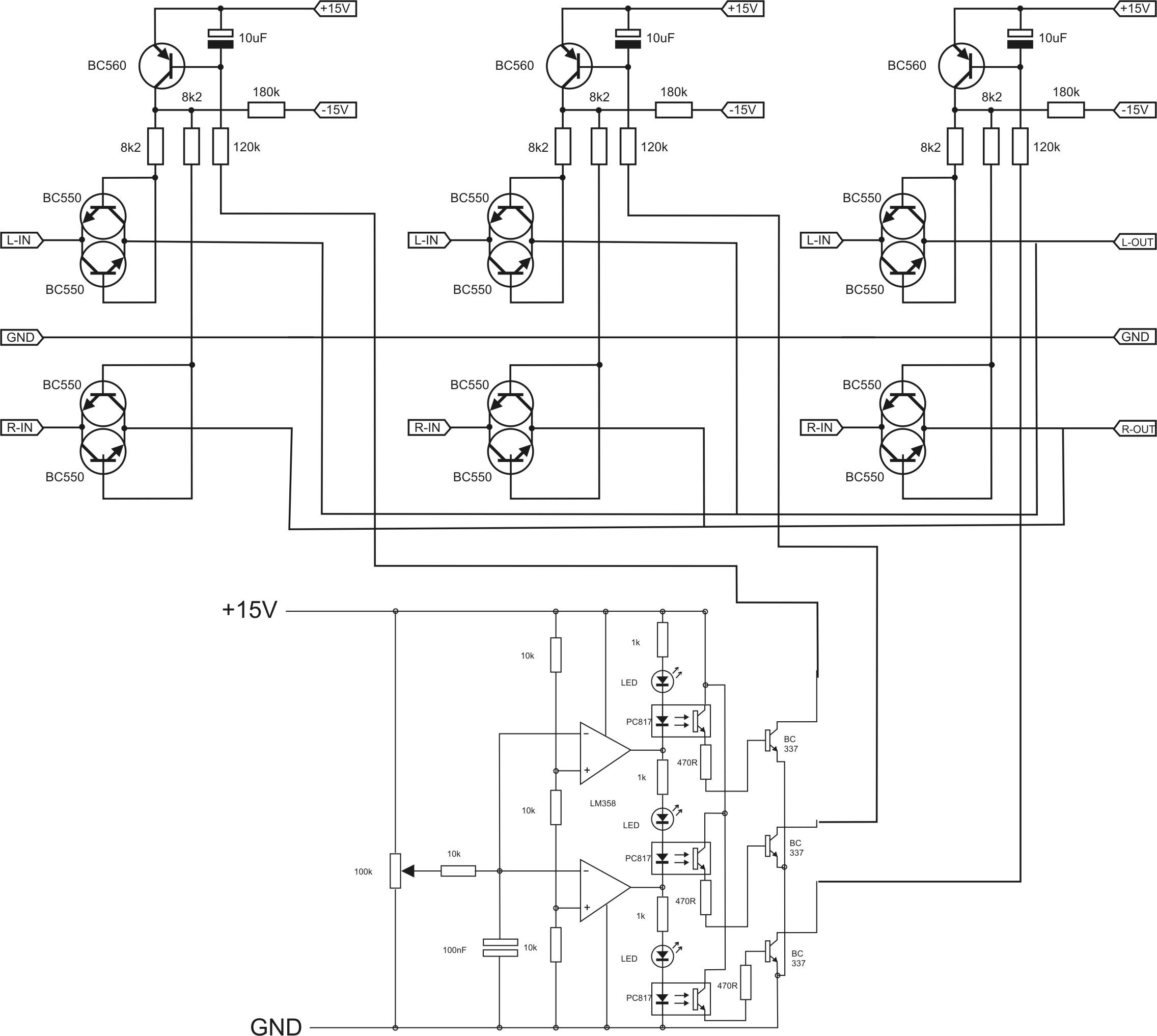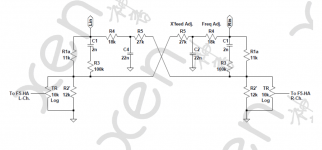Samir, do you have any plans to make another set boards? If so, I would be interested in two or three. As an aside, has anyone tried one of the completed units on headphones?
Thanks guys, this is really cool.
I need min 10 boards to make an order.
Damir
I am in a process to choose appropriate volume controller for GainWire mk3. In my opinion this preamp worth the best. There two main solution, stepped attenuator or R2R relay volume controller.
My first choice was Maya R2R ladder volume controller vicol audio : MAYA - your ultimate volume-controller but it's quite expensive.
Second choice is Elma stepped attenuator, expensive too.
If we want remote control too, the price is goes sky high.
I don't trust cheap ebay alternative.
Any suggestion is welcome.
Damir
My first choice was Maya R2R ladder volume controller vicol audio : MAYA - your ultimate volume-controller but it's quite expensive.
Second choice is Elma stepped attenuator, expensive too.
If we want remote control too, the price is goes sky high.
I don't trust cheap ebay alternative.
Any suggestion is welcome.
Damir
MUSES 72320 or (easier to get) Maxim DS1808
either contains switches, resistors and control logic only; no opamps.
mlloyd1
either contains switches, resistors and control logic only; no opamps.
mlloyd1
MUSES 72320 or (easier to get) Maxim DS1808
either contains switches, resistors and control logic only; no opamps.
mlloyd1
Dual Log Digital Potentiometer IC DS1808Z / DS1808Z-050 ( NEW ) | eBay
I am in a process to choose appropriate volume controller for GainWire mk3. In my opinion this preamp worth the best. There two main solution, stepped attenuator or R2R relay volume controller.
My first choice was Maya R2R ladder volume controller vicol audio : MAYA - your ultimate volume-controller but it's quite expensive.
Second choice is Elma stepped attenuator, expensive too.
If we want remote control too, the price is goes sky high.
I don't trust cheap ebay alternative.
Any suggestion is welcome.
Damir
Damir,
I just built an F5 HA with a passive cross-feed filter and volume pot integrated as part of the filter. The cross-feed effect is subtle but makes a huge improvement in sound quality - just sounds more natural. I am not sure if it is because the 10k volume pot is part of the filter, or is it because of the the F5HA's inherently low noise performance (dead silent) but my basic $5 stereo pot (I think it is an Alps, but not sure) is velvety smooth and no gritty or hash sound when changing volume (actually cannot tell it is rotated with no input). I am quite impressed with this volume arrangement. It presents a 5.5k ohm input impedance.
Passive cross feed filter (modified Danyuk/Linkwitz cross-over):
diyAudio
The F5HA is described in this thread:
http://www.diyaudio.com/forums/pass-labs/271926-f5-headamp.html
Here is schematic from above attachment:

Here it is implemented in my amp - I measure 0.0mV noise on my Fluke with no inputs and volume turned to full on (or anywhere in between):

Anyhow, just thought I would offer this as a cost effective option for others to try. It may require adjustment of the input impedance setting on the front end of the GW Mk3 though to be compatible.
Attachments
Last edited:
Thank you all for your suggestions.
My opinion is that digital potentiometers are not good enough, the GainWire mk3 preamp has much lower distortion, only passive resistors attenuators are good enough, even best dual potentiometers as Alps or other kind have to big differences between tracks.
xrk suggestion is not for this preamp as it's cross feed was meant for headphones only and not for line preamps and this one is manly line preamp with headphones drive capability.
By the way I tried (some time ago) different cross feed network used to get phones sound out of one head, but was satisfied with no one.
My opinion is that digital potentiometers are not good enough, the GainWire mk3 preamp has much lower distortion, only passive resistors attenuators are good enough, even best dual potentiometers as Alps or other kind have to big differences between tracks.
xrk suggestion is not for this preamp as it's cross feed was meant for headphones only and not for line preamps and this one is manly line preamp with headphones drive capability.
By the way I tried (some time ago) different cross feed network used to get phones sound out of one head, but was satisfied with no one.
I like resistive pots for volume. Maybe the way to do it is two independent ones left and right and that way the critical balancing act is up to the user. Pass B1 buffer does it this way.
R-2R Volume and remote control
Hi Damir,
how about that for a volume and remote control?
Biino | diy-audio-shop.de
I have version 1 in operation and i am fully satisfied. Version 2 is now modular, which gives you more possibilities to create your own configuration.
BR
Günni
Hi Damir,
how about that for a volume and remote control?
Biino | diy-audio-shop.de
I have version 1 in operation and i am fully satisfied. Version 2 is now modular, which gives you more possibilities to create your own configuration.
BR
Günni
What is the basis of operation for the R-2R Biino volume control? Switched array of analog switches and resistors? What are noise and distortion figures for passing through such a device?
Hi Damir,
how about that for a volume and remote control?
Biino | diy-audio-shop.de
I have version 1 in operation and i am fully satisfied. Version 2 is now modular, which gives you more possibilities to create your own configuration.
BR
Günni
It looks very interesting, but that's just PCBs and microprocessor, if I understood correctly German. What about needed components, relays, resistors, software and so on?
This preamp uses a lot of BC550's - and they are great high fidelity transistors. Could one make a 10 bank parallel analog switch using BC550's as described by Apex Audio, each one provides one "bit" of resistance and you have a 10-bit (1024 steps) digital volume controller that uses at most, 10 parallel paths through a pair of BC550's?
A JFET version could be made as well - I am told a single P channel JFET can do the job of a pair of BJT's.

So expand the above diagram to 10 banks, and use an ADC converter to change an analog voltage from a pot to a binary coded combination to activate the high fidelity analog switches.
You can even get the ADC to do a log conversion for log volume pot or use a log pot on the ADC.
A JFET version could be made as well - I am told a single P channel JFET can do the job of a pair of BJT's.

So expand the above diagram to 10 banks, and use an ADC converter to change an analog voltage from a pot to a binary coded combination to activate the high fidelity analog switches.
You can even get the ADC to do a log conversion for log volume pot or use a log pot on the ADC.
It looks very interesting, but that's just PCBs and microprocessor, if I understood correctly German. What about needed components, relays, resistors, software and so on?
Hi Damir,
sure it's only the PCB and the firmware in the controller chip. There is no additional software needed. The components are standard parts, there is no special component built in, as far as i know. It's all available a my component supplier here in Germany (Reichelt). Check the BOMs , and you will see😉.
I used for example, Dale CMF55 resistors for the R-2R ladder. For me only the bare PCB are interesting. so i can equip them for my requirements. Most expensive parts are the LCD display (ca. 10€ at ebay) and the OMRON relays (here about €2,25)
BR
Günni
Hi Damir,
sure it's only the PCB and the firmware in the controller chip. There is no additional software needed. The components are standard parts, there is no special component built in, as far as i know. It's all available a my component supplier here in Germany (Reichelt). Check the BOMs , and you will see😉.
I used for example, Dale CMF55 resistors for the R-2R ladder. For me only the bare PCB are interesting. so i can equip them for my requirements. Most expensive parts are the LCD display (ca. 10€ at ebay) and the OMRON relays (here about €2,25)
BR
Günni
Hi Gunni,
My German is to rusty to understand all, so I have some questions.
I would like to use two GainWire mk3 boards in balanced configuration.
I would need one Biino Control board with corresponding Biino Chip, two Biino Input boards with corresponding Biino Chip and two Biino Volume boards with corresponding Biino Chip. Is this correct.
I suppose I can control two Input and two Output boards with one Control board via chain connection, correct?
What remote control sender I have to use and where to buy it?
Do you remember Ebay address where you bought the LCD display?
BR Damir
Damir:
Just curious - what's your current thinking on a volume control solution so far?
Relays and resistors?
mlloyd1
Just curious - what's your current thinking on a volume control solution so far?
Relays and resistors?
mlloyd1
Hi Gunni,
My German is to rusty to understand all, so I have some questions.
I would like to use two GainWire mk3 boards in balanced configuration.
I would need one Biino Control board with corresponding Biino Chip, two Biino Input boards with corresponding Biino Chip and two Biino Volume boards with corresponding Biino Chip. Is this correct.
I suppose I can control two Input and two Output boards with one Control board via chain connection, correct?
What remote control sender I have to use and where to buy it?
Do you remember Ebay address where you bought the LCD display?
BR Damir
Hi Damir,
from my understanding, it is the following you need
1 Biino control with Biino chip
2 input controls (for 6 symetrical inputs), no Biino chip
2 volume controls, no Biino chip
The additional boards (input and volume control) are controled by the SPI i/o expanders via chan connection.
I have asked this configuration at the developer of Biino and waiting for confirmation.
For remote control you can use either an iphone or you can use an universal remote control with RC5 commands.
Your last question, regarding the LCD depends what color of display you like.
Will be back with more informations, when receive the confirmation for your configuration
BR
Günni
Damir:
Just curious - what's your current thinking on a volume control solution so far?
Relays and resistors?
mlloyd1
I would like to use something like this Remote Audio PLUS - remote controlled stepper motor driver but it's to expensive for me, or this (quad) Prices but with added remote control also to expensive.
So I think next best choice is R2R relay control attenuators.
Hi Damir,
from my understanding, it is the following you need
1 Biino control with Biino chip
2 input controls (for 6 symetrical inputs), no Biino chip
2 volume controls, no Biino chip
The additional boards (input and volume control) are controled by the SPI i/o expanders via chan connection.
I have asked this configuration at the developer of Biino and waiting for confirmation.
For remote control you can use either an iphone or you can use an universal remote control with RC5 commands.
Your last question, regarding the LCD depends what color of display you like.
Will be back with more informations, when receive the confirmation for your configuration
BR
Günni
Thanks Gunni,
regarding LCD display, color does not matter, just to be reliable. I have quite bad experience with Chinese bought on ebay.
I tried to find on Biino side to find how to sent email to ask those questions, but could not find how, probably my bad German.
BR Damir
I tried to find on Biino side to find how to sent email to ask those questions
His email address is Info@diy-audio-shop.de
Does anyone know if he ships to the US? I'm looking for a good volume control solution for my preamps/buffers.
I would like to use something like this Remote Audio PLUS - remote controlled stepper motor driver but it's to expensive for me, or this (quad) Prices but with added remote control also to expensive.
So I think next best choice is R2R relay control attenuators.
For R2R The δ1 relay-based R-2R stereo attenuator or vicol audio : r-2r volume controller
- Home
- Amplifiers
- Solid State
- GainWire Mk3 CFA pre/phone amp with very low distortion
